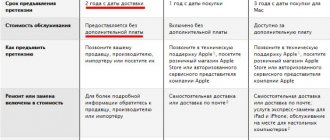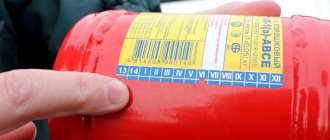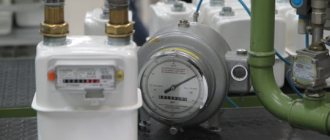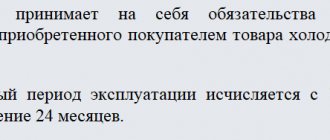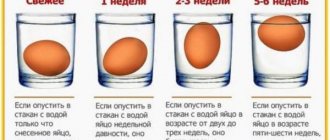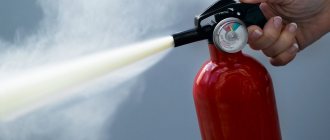Does he exist?
How to find out the expiration date of a gas cylinder?
Gas cylinders with overpressure must be tested for suitability.
The expiration date is set by the manufacturer, and it is important to know that beyond this period the use of gas containers is unacceptable .
Order No. 116 of Rostechnadzor dated March 25, 2014 approved the Safety Rules for hazardous production facilities where pressure equipment is used. Clause 485 of these Rules... precisely prohibits the excess service of these containers.
Indeed, the shelf life of cylinders is 40 years, but not all. Each type of such containers is manufactured in strict compliance with GOST requirements.
Lifespan of propane cylinders
Why do you need to replace old gas cylinders with new ones? Increasing cases of explosions and fires associated with the use of household gas cylinders are forcing the introduction of more stringent standards for their operation. From December 22, 2014, new requirements for the service life of gas cylinders, approved by Rostechnadzor Order No. 116 of March 25, 2014, began to apply. For 50-liter household gas cylinders manufactured before the entry into force of the technical regulations of the Customs Union (before February 1, 2014 years), a maximum service life of no more than 40 years is established, subject to technical examination at least once every 5 years.
In fact, the new GOSTs introduce a ban on the use of old-style metal gas cylinders manufactured before 1976. How do you know if you need to replace your old cylinder with a new one?
If you have not yet replaced your gas cylinder, have it inspected.
In order to find out exactly whether you need to replace an old 50 liter gas cylinder with a new type cylinder, you should find out the date of its manufacture. Accordingly, if a gas cylinder was made more than 40 years ago, it must be replaced with a new one. You should also refuse to use the contents of the container if the cylinder: Is subject to severe external corrosion; Has cracks, bulges or dents; Equipped with a faulty valve; The examination period has expired; The shoe on the cylinder is damaged or installed crookedly; The color of the container, the color and size of the inscription do not comply with the standard (Factory containers for propane gas are red, the inscription must be made with white paint); Fitting without plug; The valve is not on The presence of gas is felt in the air.
You can get more detailed information from our specialists by contacting a nearby gas site, or by calling the indicated numbers https://sofrinogaz.ru/usl/2012-10-22-07-49-59/mapgaz. Where on the gas cylinder is the production date and other parameters indicated?
.
What do GOSTs say?
GOST 15860 regulates the manufacture of such equipment: “Welded steel cylinders for liquefied hydrocarbon gases for pressures up to 1.6 MPa.”
This regulatory document establishes the service life of the containers - 40 liters, but subject to compliance with operating rules and mandatory technical inspection once every 5 years.
For example, aluminum cylinders BD are produced not according to GOST, but according to specifications, but there is a certificate of permission for use .
The expiration date is difficult to determine.
The most common type of vessels (steel), manufactured in accordance with GOST 949-73 and used for gaseous media, has a warranty period (from the date of commissioning) of 2 years, this is the period mentioned in clause 6.2 of GOST.
However, do not confuse the warranty and operational periods, the duration of which is 20 years.
GOST R ISO 11439-2010 for vessels for refueling (as fuel) vehicles in clause 4.3.1 indicates that the right to set the duration of the shelf life is given to the manufacturer, but this duration for such equipment should not exceed 20 years .
Shelf life of a 50 l gas cylinder
Contents A vessel is a hermetically sealed container designed for conducting chemical, thermal and other technological processes, as well as for storing and transporting gaseous, liquid and other substances.
The boundary of the vessel is the inlet and outlet fittings.
Pressure vessels are technical devices, the operation of which makes the production facility dangerous. A large number of accidents are associated with accidents of pressure vessels, therefore a number of restrictions are imposed on their design, design, manufacture, reconstruction, adjustment, installation, repair, technical diagnostics and operation in most countries of the world (see.
List of standards for the design and operation of pressure vessels). In Russia there are
“Industrial safety rules for hazardous production facilities that use equipment operating under excess pressure”
, approved by the Order of Rostechnadzor dated March 25.
2014 No. 116), as well as a number of other industry documents, the effect of which is limited to their specific area (for example,
“Rules for the design and safe operation of equipment and pipelines of nuclear power plants”
, “Rules for the design and safe operation of pressure vessels for nuclear energy facilities”, etc.). These and other state documents establish the parameters of the substances contained in the vessel, the excess of which classifies the vessel as dangerous:
- compressed, liquefied and dissolved gases under pressure over 0.07 MPa.
- steam, gas or toxic explosive liquids with pressure over 0.07 MPa;
- water with a temperature above 115 °C or other non-toxic, non-explosive liquids at a temperature exceeding the boiling point at a pressure of 0.07 MPa;
To control operation and ensure safe operating conditions, vessels, depending on their purpose, must be equipped with:
- shut-off or shut-off and control valves;
Service life established by manufacturers
The fact that it is the manufacturer who must set the service life of gas cylinders is also stated in paragraph 485 of Rostechnadzor Order No. 116. It is also recommended to set the shelf life to 20 years if any information is missing in the accompanying documentation.
- Metal composite MKB and BMK . The manufacturer has determined the shelf life of metal-composite MKB and BMK for a period of 10 years.
- Chelyabinsk Pipe Rolling Plant .
This manufacturer works with products in accordance with GOST 949-73. There is a difference in equipment manufactured before December 22, 2014, and after. The fact is that on cylinders manufactured before this date, there was no marking regarding service life, in accordance with MTO 14-3R-001-2002. It is customary to assume that when gas containers with an unspecified validity period are discovered, their shelf life is 40 years. The service life of equipment manufactured after December 22, 2014 is set by the manufacturer at 20 years. - Aluminum BD : There are no GOST standards for such vessels, and the expiration date is not indicated in the technical specifications. But manufacturers claim that the service life of aluminum gas vessels is:
- 10 years if the vessels were manufactured before November 2014;
- 20 years, subject to graduation after November 2014.
The difference in the duration of operation lies in the new, more stringent approach, based on strengthening the requirements of safety standards.
New boiler inspection rules: Bulk cylinders
The Office of the Federal Service for Environmental, Technological and Nuclear Supervision (Rostechnadzor) informs enterprises operating hazardous production facilities that use equipment operating under excessive pressure that on December 22, 2014, Federal norms and rules in the field of industrial safety came into force. Industrial safety rules for hazardous production facilities that use equipment operating under excess pressure”, approved by Order of Rostechnadzor dated March 25, 2014 No. 116.
According to paragraph 485 of these Rules, the service life of cylinders is determined by the manufacturer. In the absence of such information, the service life of the cylinders is set to 20 years. Industrial safety examinations are not carried out in order to extend the service life of mass-use cylinders with a volume of less than 50 liters. Their operation beyond the designated service life is not permitted. These Rules are a regulatory legal act in the field of industrial safety and are subject to strict implementation.
Cylinders that have spent their standard service life, but have passed technical examination in accordance with the Rules for the Design and Safe Operation of Pressure Vessels PB 03-576-03, which were in force until December 22, 2014, which established the period of safe operation until the next technical examination, after this period (after the date of the next inspection stamped on the cylinder) should not be accepted for refilling with filling points and are subject to rejection.
Technical examination of cylinders that have completed their standard (established) service life, carried out after December 22, 2014, is considered invalid. The Rostechnadzor Office notifies that if violations of these rules are detected, administrative measures will be applied to officials and legal entities in accordance with the current legislation of the Russian Federation.
Question from 07.2015:
On December 22, 2014, the Federal norms and rules in the field of industrial safety “Industrial safety rules for hazardous production facilities that use equipment operating under excess pressure” came into force, approved by Rostechnadzor order No. 116 dated March 25, 2014. According to paragraph 485 of these Rules, The service life of the cylinders is determined by the manufacturer. In the absence of such information, the service life is set to 20 years. Industrial safety examinations are not carried out in order to extend the service life of mass-use cylinders with a volume of less than 50 liters. Their operation beyond the designated service life is not permitted. These Rules are a normative legal act and are subject to strict execution. Please clarify the issue of the possible operation of cylinders that have spent their standard service life (more than 20 years), but have undergone technical examination in accordance with the “Rules for the design and safe operation of pressure vessels” (PB 03-576-03) before December 22, 2014, until the end of the technical examination period.
Answer: Federal norms and rules in the field of industrial safety “Industrial safety rules for hazardous production facilities that use equipment operating under excess pressure” (hereinafter referred to as FNP ORPD), which entered into force on December 22, 2014, establish mandatory for legal entities and individual entrepreneurs requirements aimed at ensuring industrial safety, preventing accidents, incidents, industrial injuries at sites when using equipment operating under excess pressure.
Before TR CU 032/2013 and FNP ORPD came into force, the requirements for the design, manufacture and operation of vessels were established by the Rules for the design and safe operation of pressure vessels (PB 03-576-03) , which provided for the possibility of operating vessels, including cylinders, subject to periodic technical inspection. At the same time, clause 6.3.2 PB 03-576-03 established that the inspection of cylinders must be carried out according to a method approved by the developer of the cylinder design, which must indicate the frequency of inspection and rejection standards, and in accordance with clause 6.3.24 PB 03-576- 03 for vessels that have exhausted the design service life established by the design, the manufacturer, the volume, methods and frequency of technical examination should have been determined based on the results of technical diagnostics and determination of the residual life, carried out by a specialized organization or organizations licensed to conduct industrial safety examinations of technical devices.
PB 03-576-03 and other regulatory documents, on the basis of which, before the entry into force of TR CU 032/2013 in the Russian Federation, the design and manufacture of cylinders was carried out, including GOST 15860-84 , did not establish the need for the manufacturer to issue a passport for each cylinder with a capacity up to 100 liters inclusive, indicating the service life.
In accordance with paragraph 6 of the FNP ORPD, ensuring industrial safety, preventing accidents, incidents, and industrial injuries at facilities where pressure equipment is used is carried out, inter alia, by complying with the requirements of the legislation of the Russian Federation, Federal norms and rules, by organizations and their employees, other regulatory legal acts of Rostechnadzor adopted in accordance with them, as well as regulatory documents of organizations applied by them depending on the type of activity carried out in the field of industrial safety.
At the same time, in accordance with subparagraph “d” of paragraph 218 of the FNP ORPD, the organization, in order to ensure that the equipment is maintained in good condition and safe operating conditions, it is necessary to approve the list of regulatory documents used in it to ensure the industrial safety requirements established by the legislation of the Russian Federation and the FNP ORPD.
For example, organizations carrying out technical inspection of cylinders manufactured in accordance with GOST 15860-84 before the entry into force of TR CU 032/2013 apply recommendations, including on the service life and frequency of inspection, established by the Methodology for the technical inspection of steel welded cylinders for liquefied hydrocarbon gases at pressure up to 1.6 MPa, manufactured according to GOST 15860 (MTO 14-3R-004-2005), approved by Rostekhnadzor (letter dated January 10, 2006 No. 09-03/3).
The next inspection period established based on the results of the technical inspection of the cylinder, carried out in accordance with MTO 14-3R-004-2005, is valid if it does not exceed the frequency of technical inspection or service life recommended by the specified Methodology.
Question from 12.2015:
Rostekhnadzor received an appeal with the following content: we purchased cylinders from an organization that supplies us with gas in cylinders. This year the service life of the purchased cylinders expired. Are we required to change cylinders at our own expense?
Answer: Specialists from the Department of State Construction Supervision of Rostekhnadzor gave an answer to this question.
In accordance with paragraph 10 of the Rules for the provision of utility services to owners and users of premises in apartment buildings and residential buildings, approved by Decree of the Government of the Russian Federation dated May 6, 2011 No. 354 (hereinafter referred to as the Rules), the conditions for the provision of utility services to the owner and user of a residential building (household) (conditions supply of household gas in cylinders) at his choice are determined in contracts for the supply of household gas in cylinders or in an agreement on the provision of public services concluded by the owner of a residential building (household) with an organization (including a non-profit association), which is on its own behalf and in the interests of the owner concludes contracts, including the supply of household gas in cylinders. Paragraph 21 of the Rules establishes that contracts, including the supply of household gas in cylinders, concluded with resource supply organizations, must contain provisions defining the boundaries of responsibility for the mode and quality of provision of public services of the corresponding type.
Replacing a cylinder with an expired service life with a new one is the responsibility of the owner of the cylinder, which can be either a consumer or a gas supply organization. Also, cylinders for the supply of liquefied hydrocarbon gas can be the property of a municipal entity in accordance with Article 50 of the Federal Law of October 6, 2003 No. 131-FZ “On the General Principles of the Organization of Local Self-Government in the Russian Federation.”
If it is difficult to determine the owner of the cylinders, we recommend contacting judicial authorities with experience in handling such cases: https://sudact.ru/regular/doc/RKHxHibabtVP/ (Decision of the Kharovsky District Court (Vologda Region) No. 2-506/2013 dated 08/22/2013 ).
Question from 06.2016:
We use oxygen cylinders with a volume of 1 and 40 liters, manufactured between 1971 and 1984. Is it possible to operate until 2020 and 2020 cylinders that are recognized as suitable for use based on the results of a technical examination carried out in 2012 and 2014, respectively?
Answer: Specialists from the Department of State Construction Supervision of Rostekhnadzor provided clarification on this issue.
Clause 2.4 “Methods for technical examination of steel welded cylinders for liquefied hydrocarbon gases at pressures up to 1.6 MPa, manufactured in accordance with GOST 15860-84” (MTO 14-ZR-004-2005) , developed by the open joint-stock company “Russian Research Institute of Pipe industry" (JSC "RosNITI"), which applies to cylinders with a capacity of 5, 12, 27 and 50 liters for a working pressure of up to 1.6 MPa, manufactured in accordance with GOST 15860 , agreed with Rostechnadzor by letter dated January 10, 2006 No. 09-03/3 , The technical committee for standardization TK 359 “Steel and cast iron pipes and cylinders” established that the service life of cylinders is no more than 40 years. At the end of its service life, the cylinder must be discarded.
In this regard, we consider it unacceptable to fill and operate the above cylinders manufactured before 02/01/2014 in accordance with GOST 15860, used for gas supply to the population, the service life of which exceeded 40 years.
For cylinders manufactured in accordance with other GOSTs, the requirements of clause 485 of the Federal norms and rules in the field of industrial safety “Industrial safety rules for hazardous production facilities that use equipment operating under excess pressure” apply.
How long does gas last?
Different gases can be stored in vessels for different amounts of time.
- Propane-butane retains its properties for an indefinite amount of time. The main condition is that the minimum level of operating pressure be maintained. Propane-butane can be used until the contents of the cylinder are empty.
- The manufacturer defines the shelf life of oxygen in a cylinder as 18 months. from the day the product was prepared.
- Acetylene is considered the most explosive and difficult gas to handle. Cylinders can contain acetylene for quite a long time, but the company working with this substance is obliged to carry out weight and porosity checks before carrying out welding work; if these indicators do not meet the standards, working with the contents of the vessel is impossible.
- Pure argon can be stored for 18 months.
- Hydrogen in cylinders for 3 years.
- Nitrogen is also stored in cylinders . This gas can be used when kept in a cylinder for 18 months.
Read about the expiration date and storage rules for rechargeable batteries here.
How to determine a 50 liter cylinder?
All information is located right on the upper end of the gas tank . Various information is placed on the 50-liter container, including three groups of numbers indicating the month and year of manufacture, and the next group is the time of the first recertification (an extraordinary test is carried out after repair and cannot be predicted by the manufacturer).
Between these dates there is a gap of 5 years, after which periodic tests are planned. The results of subsequent tests should be stamped directly on the body of the top of the vessel.
Currently, to make the task easier for users , the year of manufacture is painted on the body: 08 - 2008, 11 - 2011, etc. According to clause 22 of the new Rules..., the estimated service life from the date of manufacture must be entered in the passport, and for a cylinder the passport is a metal plate with information stamped on it.
About the nuances of propane cylinders in this video:
Permissible operation period
There is no difference between industrial and household vessels for storing gases these are the same containers.
Cylinders for industrial use must be maintained in conditions that meet the requirements of safe operation rules, similar to household vessels.
The only difference is that in industry they do not use containers with small volumes. The service life of a domestic and industrial gas cylinder is the same.
Do gasoline and diesel fuel have an expiration date? Find out the answer right now.
Types and design of valves
Despite the fact that all cylinders for storing and transporting gases differ from each other in shape, coating color, volume and many other characteristics, they all have the same design. The cylinder includes a faucet, a tank, etc. Faucets may differ from each other in design features and materials that were used for their production. In addition, they are divided by type of application - some are used for oxygen, others for propane, and others for acetylene. Accordingly, the following type of coatings are applied to their surface:
A typical gas tap consists of:
The body is made in the form of a tee, consisting of three fittings, each of them has a thread. On some models, a safety valve is built into the housing. The main task of this device is to relieve excess pressure that has arisen in the cylinder.
A fitting located at the bottom designed to connect the valve to a gas storage tank. A regulating flywheel (steering wheel) is attached to the top one. External communications are connected to the side fitting or gas is injected. The body and main parts are made of brass or steel.
Valves used for non-flammable gases are made with a right-hand thread on the fittings, for those used for flammable gases, a left-hand thread is cut.
Re-examination
Each type of gas cylinders has its own re-examination deadlines established by Gosgortekhnadzor. Gas environments have different properties and are aggressive to varying degrees towards the vessel body.
The company conducting the first re-examination stamps on the top of the case in the “R-AA” format, where R is the company’s mark, AA is the date of the next test.
The periods between technical inspection of steel cylinders are as follows:
- propane - 5 years;
- automobile – 2 years;
- argon - 5 years;
- oxygen - 5 years;
- permanently installed, with large capacity - 10 years.
It is important to know that metal-composite MKB and BMK containers do not need re-examination at all ; the full period of 10 years is their lifespan.
The rules... establish the following frequency of inspection of pressure vessels at the rate of destruction:
- no more than 0.1 mm/year - 2 years;
- more than 0.1 mm/year - 5 years.
It is worth relying on the professionalism of specialists from companies that have a license and stamp to carry out the inspection of cylinders, and focus on the deadlines established by them.
